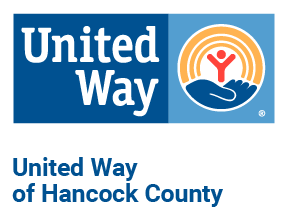There are 1.8 million households in Ohio unable to afford the state’s cost of living, with conditions still lagging behind pre-recession levels, according to the United Way ALICE Report released today by Ohio United Way.
ALICE® – Asset Limited, Income Constrained, Employed; Study of Financial Hardship places a spotlight on a large population of hardworking residents who work at low-paying jobs, have little or no savings, and are one emergency from falling into poverty. The report is the most comprehensive depiction of financial need in the state to date, using the latest data from a variety of sources, including the U.S. Census. The report unveils new measures, based on present-day income levels and expenses that quantify the size of who in Ohio’s workforce is struggling financially, and why.
United Way of Hancock County will be using the research from the ALICE Project to support its financial stability initiative which will be unveiled on October 10 at the Marathon Center for the Performing Arts. The event is free and open to the public. Registration and refreshments will be provided from 4:30 to 5:30. The forum will begin at 5:30. Attendees are asked to register at http://liveunitedhancockcounty.org/forum or send an email to teresa.white@uwhancock.org or call 419-423-1432.
The new initiative will work to improve the financial stability for hundreds of Hancock County households. “United Way has been committed to bringing people and organizations together to find solutions that help people lead better lives and build a better community,” said John Urbanski, president and CEO of United Way of Hancock County. “This initiative is another step forward in this important work.”
A total of 1.2 million households fall into what United Way calls the ALICE population. These are households earning more than the official U.S. poverty level, but less than the basic cost of living. This number is nearly double the official poverty rate, which accounts for 660,000 households in the state. Combined, ALICE and poverty households, account for 40% of the population in the Ohio. Hancock County’s ALICE population is 25% or 7,750 households.
“We all know ALICE,” said Ohio United Way’s President & CEO Steven C. Hollon. “ALICE is the recent college graduate unable to afford to live on his or her own, the young family strapped by child care costs and the mid-career professional now underemployed. These folks are vital to our state’s future economic well-being, and they face barriers beyond their control frustrating their ability to become financially stable.”
Ohio United Way has joined a grassroots movement of some 450 United Ways in 15 states to use the same methodology for documenting financial need. The reports build on a United Way study first developed in New Jersey. United Way ALICE Reports provide county-by-county and town-level data, and analysis of how many households are struggling, including the obstacles ALICE households face on the road to financial independence.
“This report provides the objective data that explains why so many residents are struggling to survive and the challenges they face in attempting to make ends meet,” said the report’s lead researcher, United Way ALICE Project National Director Stephanie Hoopes, Ph.D. “Until now, the true picture of need in local communities and states has been understated and obscured by misleading averages and outdated poverty statistics.”
The United Way ALICE Report reveals:
- More than 67% of all jobs in Ohio pay less than $40,000 a year and low-income jobs are projected to dominate the state’s economy for the foreseeable future.
- Households with income below the ALICE Threshold make up between 22 and 56 percent of households in every county in Ohio.
- 70% of Ohio’s 1,568 county subdivisions have 30 percent or more households unable to make ends meet. The average income needed in order to survive in Ohio, dependent on local conditions, is more than double the official U.S. poverty rate.
- Despite the combination of ALICE’s wages and some public assistance, ALICE households still face a 40 to 50 percent income gap in housing and child care, further hindering their attempts to reach financial stability.
“ALICE often is forced to make choices that compromise health and safety in order to make ends meet,” Mr. Hollon said, putting both ALICE and the wider community at risk of long-term societal and economic repercussions.
United Way is focused on providing the basic foundation in the areas of education, financial stability and health to help improve the lives of both ALICE and those in poverty, for the long-term benefit of the wider community.
Ohio United Way and 46 local United Ways funded the ALICE Report for Ohio. Nationally, the United Way ALICE Report has been funded in part by corporate sponsors including the Aetna Foundation, AT&T, Atlantic Health System, Deloitte, Entergy, Johnson & Johnson, KeyBank, Novartis Pharmaceuticals Corporation, OneMain Financial, Thrivent Financial Foundation, The UPS Foundation and U.S. Venture.
For more information or to find data about ALICE in local communities, visit www.UnitedWayALICE.org.
